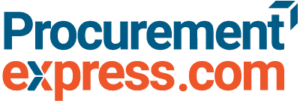As a fractional CFO, the pressure is on you to not only deliver financial clarity but also uncover opportunities to save your clients money in areas they might have overlooked.
One of the most impactful ways to achieve this? Smarter purchasing decisions.
You have the power to guide your clients toward financial health by helping them rethink how they spend, negotiate, and manage their resources.
This post is designed to help business owners navigate cost savings strategies in procurement and purchasing, whether you’re setting up clear financial reporting, optimizing vendor agreements, or leveraging automation to reduce manual labor.
- Understand customer needs upfront
- Create separate financial reporting for new initiatives
- Adopt accrual accounting
- Track employee utilization rates
- Bundle fully loaded costs into pricing
- Use affordable tools before committing to expensive enterprise options
- Automate financial and operational processes
- Set clear expectations in contracts
- Create incentivizes based on real metrics
- Invest in employee training and upskilling
- Hire fractional resources for specialized roles
- Use data analytics tools for better insights
- Structure financial statements for clarity
- Communicate across teams
Understand customer needs upfront
You can save a lot of time, money, and headaches by figuring out what your customers actually need before diving in. Ask discovery questions to uncover their biggest challenges and priorities. What’s bothering them most? What’s not working? If you skip this step, you risk building features or offering services no one uses, which is basically setting money on fire.
When you truly understand what they need, you can focus on solving the right problems, not wasting time on stuff that doesn’t move the needle. Plus, it’s easier to build trust when you show that you actually get what they’re struggling with.
Pro tip: Don’t stop at the first answer they give. Dig deeper. Ask follow-up questions to clarify and uncover things they might not even realize are issues yet. Stay curious, keep checking in, and make sure you’re still on the same page as the project moves forward. That’s how you avoid the “We didn’t really need this” moment.
Create separate financial reporting for new initiatives
Setting up distinct financial reporting for new projects is a smart way to track performance and profitability without muddying the waters. Use a separate profit and loss (P&L) statement or assign classes in your cloud accounting software, like QuickBooks, to capture data specific to the new venture. This helps you avoid accidentally subsidizing it with revenue from your core business.
This creates clarity. You’ll see exactly how the new initiative is performing and make better decisions about whether to keep investing or pivot. Plus, it keeps your financials transparent, which is a huge plus when it comes to leadership buy-in or investor confidence.
Then, review these reports regularly and look for trends. Are certain costs ballooning? Are revenues aligning with projections? This data will give you the insights you need to adjust course if needed.
Adopt accrual accounting
Switching to accrual accounting is key to aligning revenue recognition with project progress, smoothing out financial reporting, and avoiding misleading spikes and dips in your P&L.
Unlike cash accounting, which focuses on when money moves in and out, accrual tracks when revenue is earned and expenses are incurred. This paints a more accurate picture of your financial health and helps you identify trends or red flags early.
Track employee utilization rates
Employee utilization is one of the biggest levers, especially for service business profitability. Track billable versus non-billable hours to see how much of your team’s time is generating revenue.
Monitoring utilization of billable vs. nonbillable work helps you balance workloads, improve resource allocation, and justify hiring decisions. It’s also an excellent tool for spotting training or upskilling opportunities. For instance, low utilization often points to gaps in scheduling, skills, or client demand that need addressing.
Pro tip: Aim for at least 75% utilization on billable projects, but ensure employees have time for training and internal projects to avoid burnout.
Bundle fully loaded costs into pricing
When calculating hourly rates, don’t just include salaries. Add in PTO, benefits, training, overhead, and other indirect costs to better understand your employee costs. This ensures your pricing accounts for everything, not just direct labor.
This is important because if you’re only charging based on raw salaries, you’re likely underpricing your services. Fully loaded rates protect your profit margins and help cover the true cost of running your business.
Then, set a reminder to review your prices and real expenses every 6-12 months, or anytime you are offering raises, expanding benefits, or upgrading training programs.
Use affordable tools before committing to expensive enterprise options
Don’t blow your budget on expensive enterprise software right away. Start with cost-effective solutions like QuickBooks for cloud accounting, ProcurementExpress for purchasing, or basic project management software like Asana or ClickUpto get the job done before upgrading to an expensive ERP solution.
These tools often give you the functionality you need for longer than you think, all while keeping your overhead low. So, you can reinvest the savings into growth opportunities.
Automate financial and operational processes
Manual processes are slow, error-prone, and expensive. Automating repetitive tasks, like invoicing, collecting receipts, expense management, etc., lets your team work smarter, not harder while improving accuracy and speed.
However, to reduce overwhelm, start small. Automate one process at a time, measure the impact and iterate.
Set clear expectations in contracts
Ambiguity leads to misunderstandings, which cost time and money to resolve. Laying everything out upfront in a contract ensures both parties know exactly what to expect and what happens if the project evolves.
This means clearly defining the project scope, responsibilities, assumptions, change order processes, and out-of-scope billing terms to prevent surprises or scope creep.
Create incentivizes based on real metrics
Metrics-based incentives encourage focus and accountability. When you align employee performance with business goals, employees see how their contributions impact the business. This clarity reduces confusion and boosts motivation.
Invest in employee training and upskilling
Don’t let your team’s skills stagnate. Invest in creating a company culture of continuous learning where ongoing training and professional development is not only encouraged but expected.
That’s because employee underutilization often stems from outdated skills. A well-trained team is more efficient, adaptable, and capable of tackling high-value projects.
Pro tip: Track which skills are most in demand and prioritize training in those areas. Offer incentives for certifications or attending industry workshops.
Hire fractional resources for specialized roles
Fractional hires, like CFOs, experienced marketers, or data analysts, let you access top-tier expertise without the cost of full-time salaries.
This means you save money while still getting the insights and strategic guidance you need to grow. It’s perfect for roles you don’t need every day but still require for critical projects.
Pro tip: Start with a clear scope of work and timeline to maximize value from fractional hires.
Use data analytics tools for better insights
Accurate, clean data helps you make smarter decisions. Finance and data analytics tools reveal trends, inefficiencies, and opportunities you might otherwise miss.
Structure financial statements for clarity
Organize your financials by breaking down revenue, costs, and other metrics by department or project. This provides visibility into what’s working and what isn’t and makes it easier to identify trends and spot inefficiencies. So, you can adjust strategies before small issues turn into big problems.
Communicate across teams
Bridge the gaps between finance, operations, and sales by sharing relevant financial goals and performance metrics.
Cross-team alignment ensures everyone is rowing in the same direction. Clear communication reduces friction and boosts overall productivity.
Wrap-up
By now, you’ve seen how fractional CFOs can drive meaningful cost savings for their clients through smarter procurement and purchasing strategies. From optimizing financial reporting to leveraging automation and focusing on employee utilization, these steps are all about empowering business owners to take control of their financial future.
But even the best strategies can hit a snag without the right tools to back them up.
If purchasing is one of those areas where things often fall through the cracks, ProcurementExpress.com can fill the gap. With automated approval workflows, invoice matching, and seamless integration with accounting systems like QuickBooks, it simplifies purchasing while keeping you in control of your cash flow and expenses.
Ready to see how much easier managing purchases can be? Start your free trial and take the first step toward smarter financial management.



